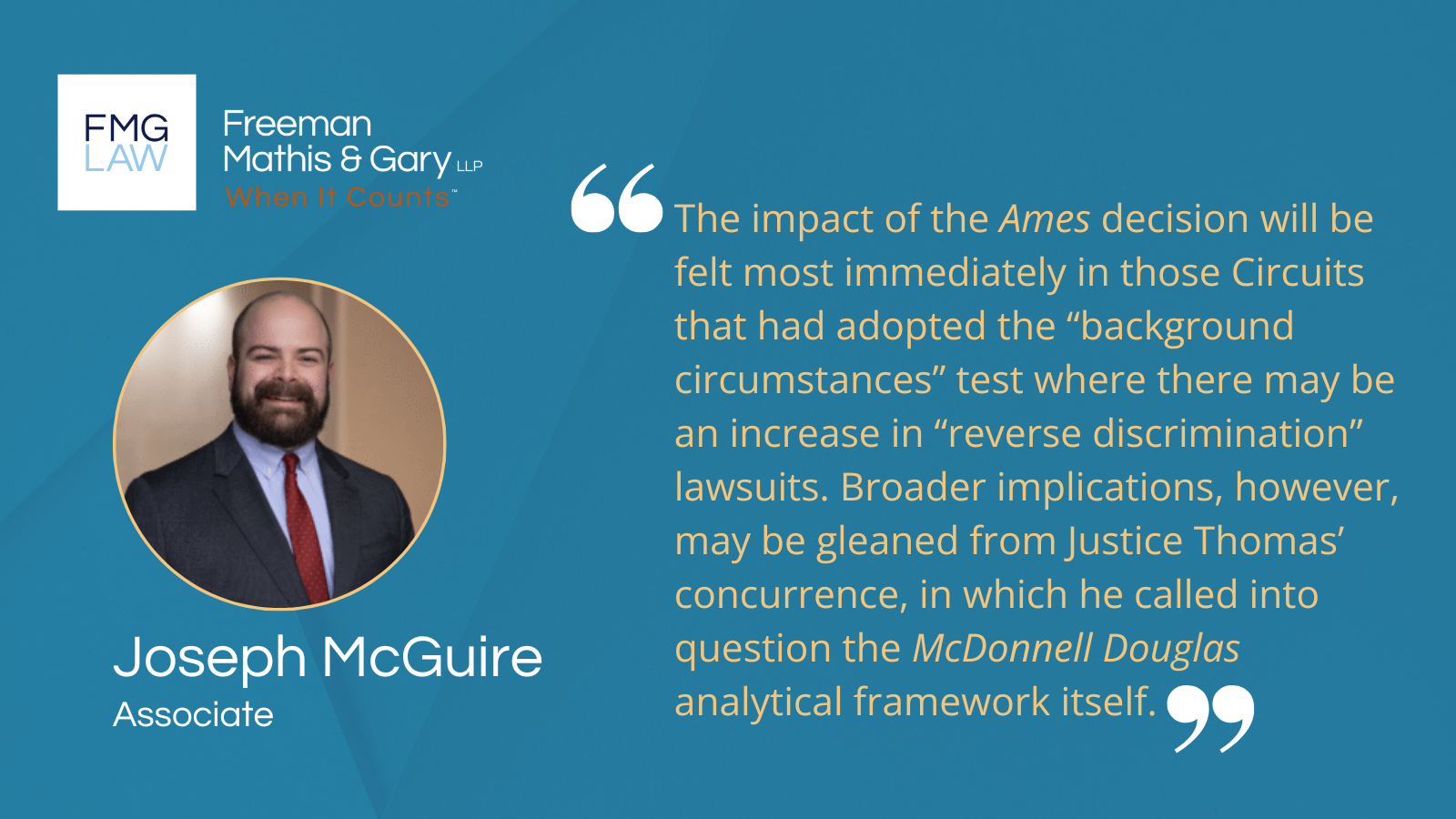BlogLine
Supreme Court rejects heightened burden for majority group plaintiffs in Title VII claims: A closer look at Ames v. Ohio Department of Youth Services
6/9/25

In a unanimous decision issued on June 5, 2025, the U.S. Supreme Court ruled in Ames v. Ohio Department of Youth Services that plaintiffs who are members of a majority group—such as heterosexual, male and white individuals—cannot be held to a higher evidentiary standard than a member of a minority group when bringing discrimination claims under Title VII of the Civil Rights Act of 1964.
Background of the Case
Marlean Ames, a heterosexual woman, had worked for the Ohio Department of Youth Services since 2004. In 2019, she applied for a management position but was passed over in favor of a lesbian candidate. Later, she was demoted from her role as a program administrator, and a gay man was hired to replace her.
Ames filed suit under Title VII, alleging that these employment decisions were based on her sexual orientation. The district court granted Ohio’s motion for summary judgement and the Sixth Circuit Court of Appeals affirmed the district court’s decision. Both courts found that Ames failed to establish a prima facie case under the traditional McDonnell Douglas framework for evaluating disparate-treatment claims. In doing so, however, the courts applied a heightened evidentiary burden to Ames’ prima facie case known as the “background circumstances” test.
This test, followed by five Circuits including the Sixth Circuit, required plaintiffs that are members of a majority group to put forth additional evidence that the defendant-employer “is that unusual employer who discriminates against the majority.” To meet this standard, courts generally required majority-group plaintiffs to produce statistical evidence of the employer’s discrimination against majority group members or evidence that the relevant decision maker is a member of a minority group.
The “background circumstances” test contrasts with the typical prima facie showing: that the plaintiff was qualified for the position and suffered an adverse action under circumstances that give rise to an inference of discrimination.
The Supreme Court’s Ruling
The Supreme Court rejected the Sixth Circuit’s approach, holding that Title VII does not support imposing a heightened burden on majority-group plaintiffs. Writing for the Court, Justice Jackson emphasized that the statute prohibits discrimination against “any individual” “because of” race, sex or other protected characteristics. In other words, Title VII establishes the same protections for every individual—without regard to whether the plaintiff is part of a majority or minority group. The Court further reaffirmed that application of the first step in the McDonnell Douglas burden-shifting framework is not meant to be onerous and that the precise requirements of a prima facie case can vary depending on the circumstances.
The Court concluded that by requiring the same form of additional proof from all majority-group plaintiffs, the “background circumstances” test created an impermissible barrier inconsistent with the text and purpose of Title VII, as well as Supreme Court precedent.
Implications for Employers
The impact of the Ames decision will be felt most immediately in those Circuits that had adopted the “background circumstances” test where there may be an increase in “reverse discrimination” lawsuits. Broader implications, however, may be gleaned from Justice Thomas’ concurrence, in which he called into question the McDonnell Douglas analytical framework itself. In Justice Thomas’ concurring opinion, he opined that McDonnell Douglas suffers from the same flaws as the “background circumstances” test—it is a judicially created doctrine not supported by the text of Title VII. A departure from the McDonnell Douglas framework is not expected any time soon, but it would represent a seismic shift in Title VII litigation.
As was also pointed out by Justice Thomas in his concurrence, the Court’s rejection of the “background circumstances” test aligns with the current trend away from robust or express diversity, equity and inclusion (“DEI”) efforts. In this sense, the Ames decision may be read as a cautionary reminder that such well-meant initiatives must be grounded in the law.
Final Thoughts
The Ames decision emphasizes that Title VII’s protections are broad and symmetrical. As the Court made clear, discrimination is unlawful regardless of the direction in which it flows. Employers thus must ensure that their programs and policies are consistent with the balanced approach mandated by Title VII.
If you have questions about how this decision may affect your organization, our employment law team is here to help.
Information conveyed herein should not be construed as legal advice or represent any specific or binding policy or procedure of any organization. Information provided is for educational purposes only. These materials are written in a general format and not intended to be advice applicable to any specific circumstance. Legal opinions may vary when based on subtle factual distinctions. All rights reserved. No part of this presentation may be reproduced, published or posted without the written permission of Freeman Mathis & Gary, LLP.
Share
Save Print
